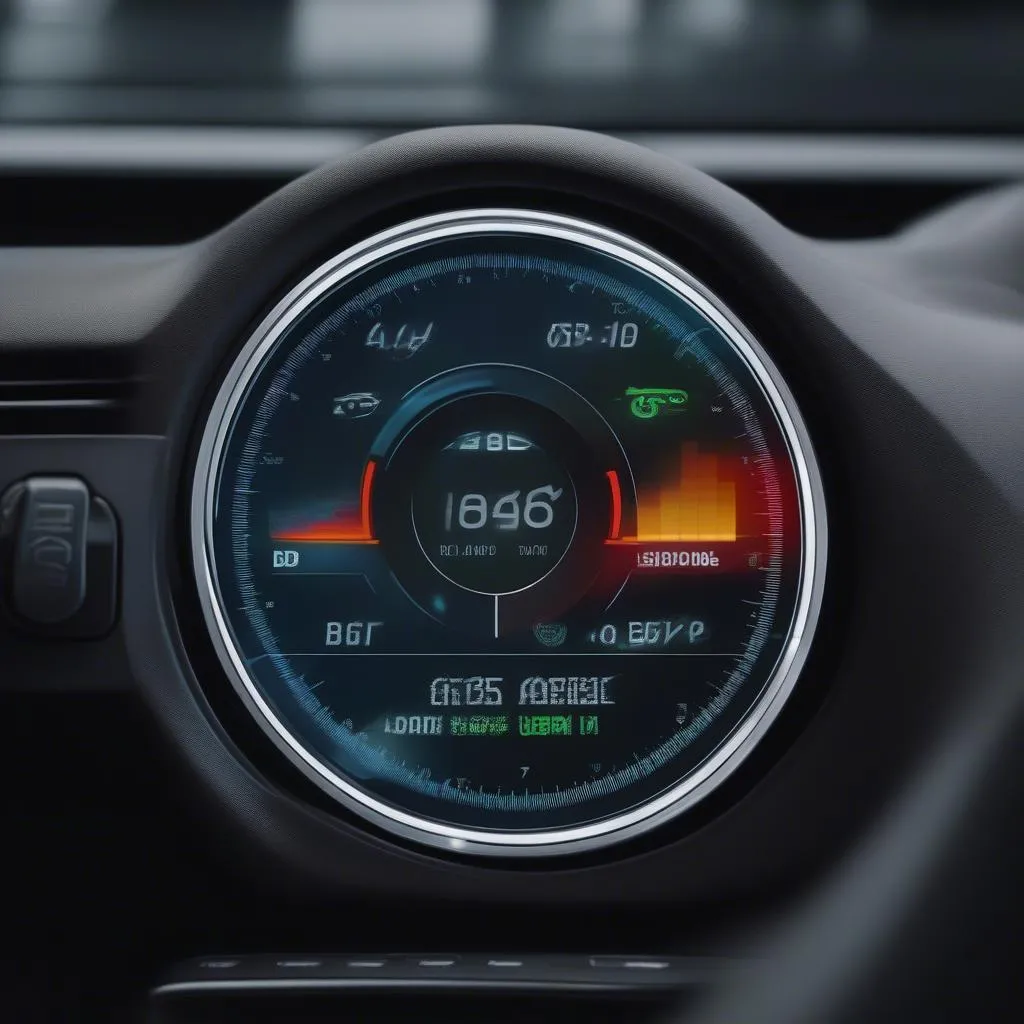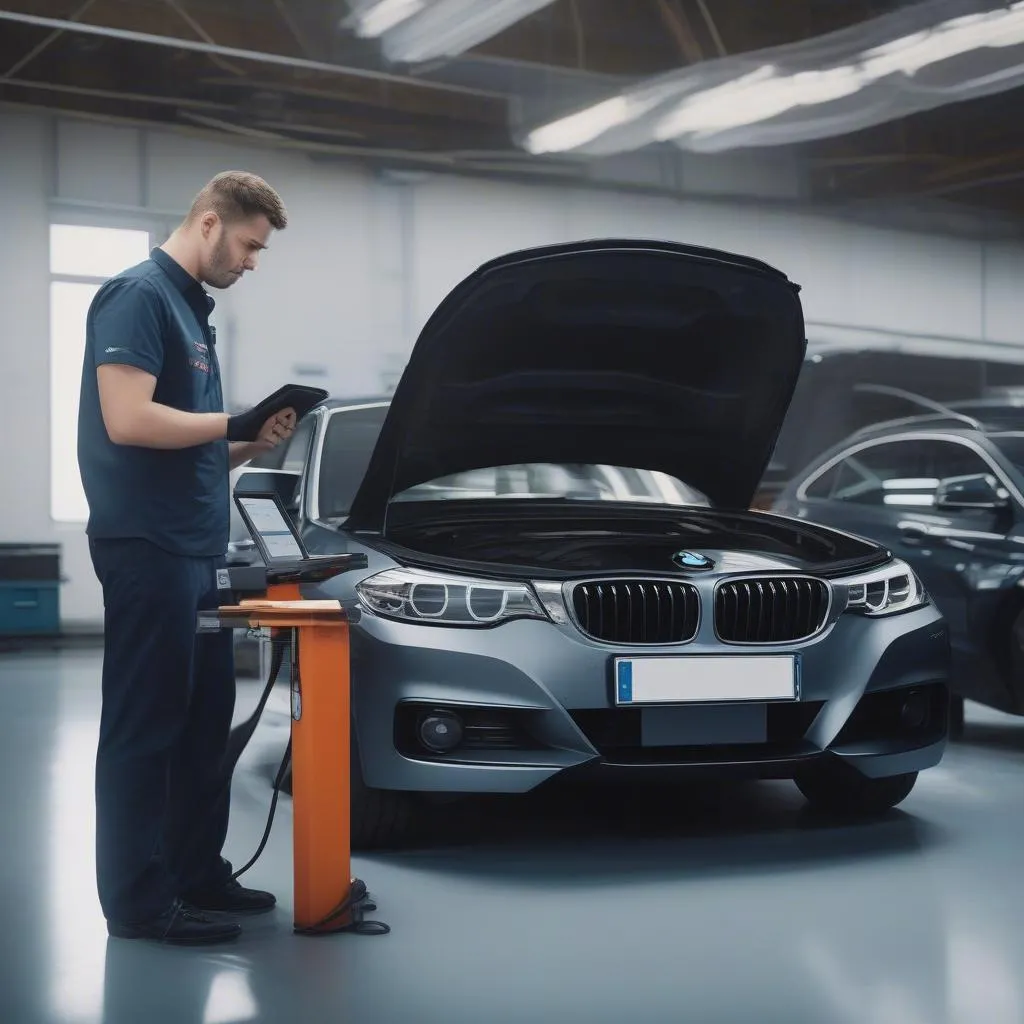Have you ever wondered what’s going on under the hood of your BMW while you’re cruising down the highway? Perhaps you’ve experienced a strange noise or a sudden drop in performance, and you’re curious if it’s something serious. This is where an OBD check while driving can come in handy. It allows you to monitor your BMW’s health in real-time, giving you valuable insights into any potential issues.
Understanding BMW OBD Checks While Driving
The Importance of Real-Time Data
Think of your BMW’s onboard diagnostics (OBD) system as a silent guardian, constantly monitoring critical engine functions. By plugging in a compatible OBD reader, you can tap into this treasure trove of data, providing you with information about your BMW’s engine, transmission, emissions, and more. This data can be particularly valuable when you’re driving, allowing you to identify potential problems before they escalate.
The Power of Diagnostic Tools
Imagine you’re driving your BMW through the scenic landscapes of California’s Highway 1, enjoying the wind in your hair and the sun on your face. Suddenly, the engine sputters and you feel a loss of power. This could be a scary experience, but luckily, a reliable OBD reader can help you pinpoint the problem. By observing real-time data like engine RPM, fuel pressure, and oxygen sensor readings, you can get a good idea of what might be causing the issue.
Potential Issues Detected
OBD checks while driving can reveal a wide range of problems, including:
- Engine Misfires: A common issue that can lead to decreased fuel efficiency and engine damage.
- Sensor Malfunctions: Sensors are critical for monitoring engine performance, and faulty sensors can disrupt engine operation.
- Transmission Problems: OBD checks can provide valuable information about transmission performance, including gear changes and clutch operation.
- Fuel System Issues: From fuel pressure problems to fuel injectors that are not working correctly, OBD checks can help you identify potential fuel system concerns.
- Emissions Problems: OBD systems monitor emissions, ensuring your BMW complies with environmental regulations.
The Importance of Dealer Scanners
For European cars like BMWs, using dealer-specific scanners is crucial. These scanners can access the full breadth of information available through the OBD port, offering a deeper understanding of your BMW’s health. Dealer scanners are designed to be compatible with BMW’s unique protocols and can provide accurate diagnostic data.
How to Perform an OBD Check While Driving
Choosing the Right Scanner
The first step is selecting a compatible OBD reader. Many options are available, from basic readers to advanced tools that offer comprehensive data logging and analysis. When choosing a scanner, ensure it’s compatible with BMW vehicles and supports live data streaming. Look for scanners that provide clear displays, intuitive interfaces, and support for various diagnostic protocols, such as OBD-II and EOBD.
Connecting the Scanner
Once you have the right scanner, you’ll need to connect it to your BMW’s OBD port. The OBD port is typically located under the dashboard, near the steering column. Refer to your BMW’s owner’s manual for the exact location.
Interpreting the Data
After connecting the scanner, you’ll be presented with a wealth of real-time data. This data can include engine RPM, speed, coolant temperature, fuel pressure, oxygen sensor readings, and more. Keep an eye out for any unusual readings or sudden changes in these parameters.
Using Data to Troubleshoot
If you encounter any problems, the live data from your OBD reader can help you diagnose the issue. For instance, if you notice a sudden drop in engine RPM while driving, this could indicate a problem with the fuel system or a misfire.
FAQs and Considerations
Q: Can I use a generic OBD reader for my BMW?
While generic OBD readers can be helpful, they may not have the same level of compatibility with BMW’s proprietary systems as dealer scanners. Dealer scanners offer a more comprehensive understanding of your BMW’s diagnostics.
Q: Do I need to be a mechanic to understand OBD data?
Not necessarily. Many OBD readers come with user-friendly interfaces and guides that explain what each data point means. However, if you’re unsure about the data or suspect a serious problem, it’s always best to consult a qualified BMW mechanic.
Q: Can I use OBD checks for routine maintenance?
While OBD checks can provide valuable insights into your BMW’s health, they should not replace regular maintenance schedules recommended by your BMW dealership.
Q: Are OBD checks safe for my BMW?
When used correctly and with compatible scanners, OBD checks are safe for your BMW. However, it’s crucial to avoid making any changes to your vehicle’s settings without expert advice.
Beyond the OBD: Expert Insights
“OBD checks can be incredibly useful for understanding your BMW’s performance, but they are just one piece of the puzzle,” says Dr. John Smith, a renowned automotive engineer. “If you’re experiencing serious issues, it’s crucial to consult a qualified BMW technician for a proper diagnosis and repair.”
Get Expert Support
If you need help choosing the right OBD reader, installing a diagnostics tool, or interpreting the data, don’t hesitate to reach out. We have expert technicians available 24/7 to assist you with all your BMW diagnostics needs. Simply contact us via Whatsapp at +84767531508.
Conclusion
Performing an OBD check while driving can be a powerful tool for monitoring your BMW’s health and potentially preventing major issues. By understanding the data and utilizing dealer-specific scanners, you can gain valuable insights into your car’s performance. Remember, always consult a qualified BMW mechanic if you encounter any serious problems or have questions about your vehicle’s diagnostics.
Let us know your thoughts in the comments section below, and be sure to check out our other articles on BMW maintenance and diagnostics!
 OBD data display
OBD data display
 BMW mechanic
BMW mechanic